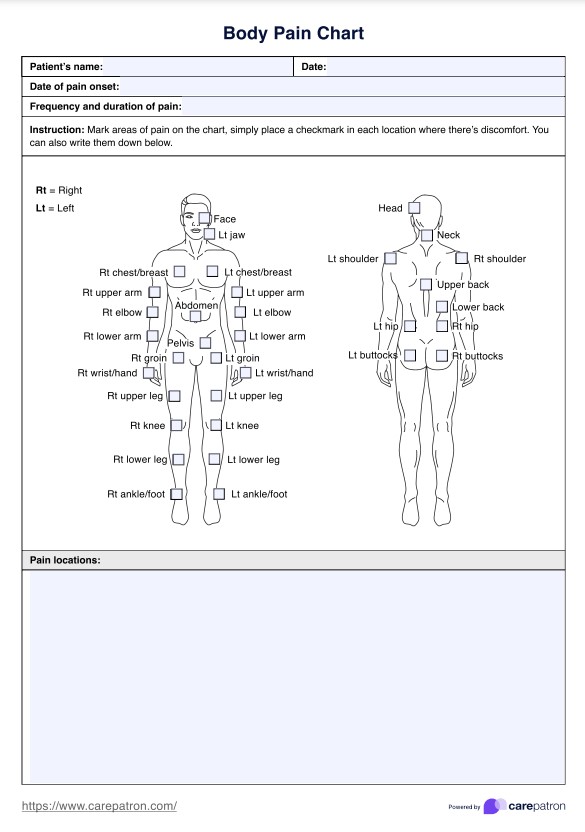A body map is a clinical tool, often a simplified diagram or silhouette of the human body (front and back view), used by healthcare providers to help patients visually communicate the location, extent, and type of their pain. Patients mark the diagram with symbols, colors, or shading to indicate exactly where they feel discomfort, which helps the clinician understand the distribution of pain (e.g., localized, radiating, widespread) and track changes over time.

Body Pain Charts
Improve pain management by monitoring bodily discomfort using a Body Pain Chart. Get access to a free PDF template now.
Body Pain Charts Template
Commonly asked questions
Pain levels 1 to 10 are the numerical ratings used in the numerical rating scale (NRS), a standard clinical tool where a patient verbally rates their pain intensity from 0 (no pain) to 10 (worst pain imaginable). These levels are generally defined as: 1-3 (mild pain), noticeable but does not interfere with daily activities; 4-6 (moderate pain), interferes with normal activities and requires attention; and 7-10 (severe pain), disabling pain that is intense and requires immediate relief, with 10 being the highest possible rating a person can report.
While pain is highly subjective and varies greatly between individuals, the experience often described as the most agonizing pain a human can feel is typically related to specific, intense, acute conditions. These commonly include cluster headaches, trigeminal Neuralgia (an electric shock-like facial pain), Kidney Stones (renal colic), and complex regional pain syndrome (CRPS), with many medical sources citing Cluster Headaches as the most severe known pain.
EHR and practice management software
Get started for free
*No credit card required
Free
$0/usd
Unlimited clients
Telehealth
1GB of storage
Client portal text
Automated billing and online payments











